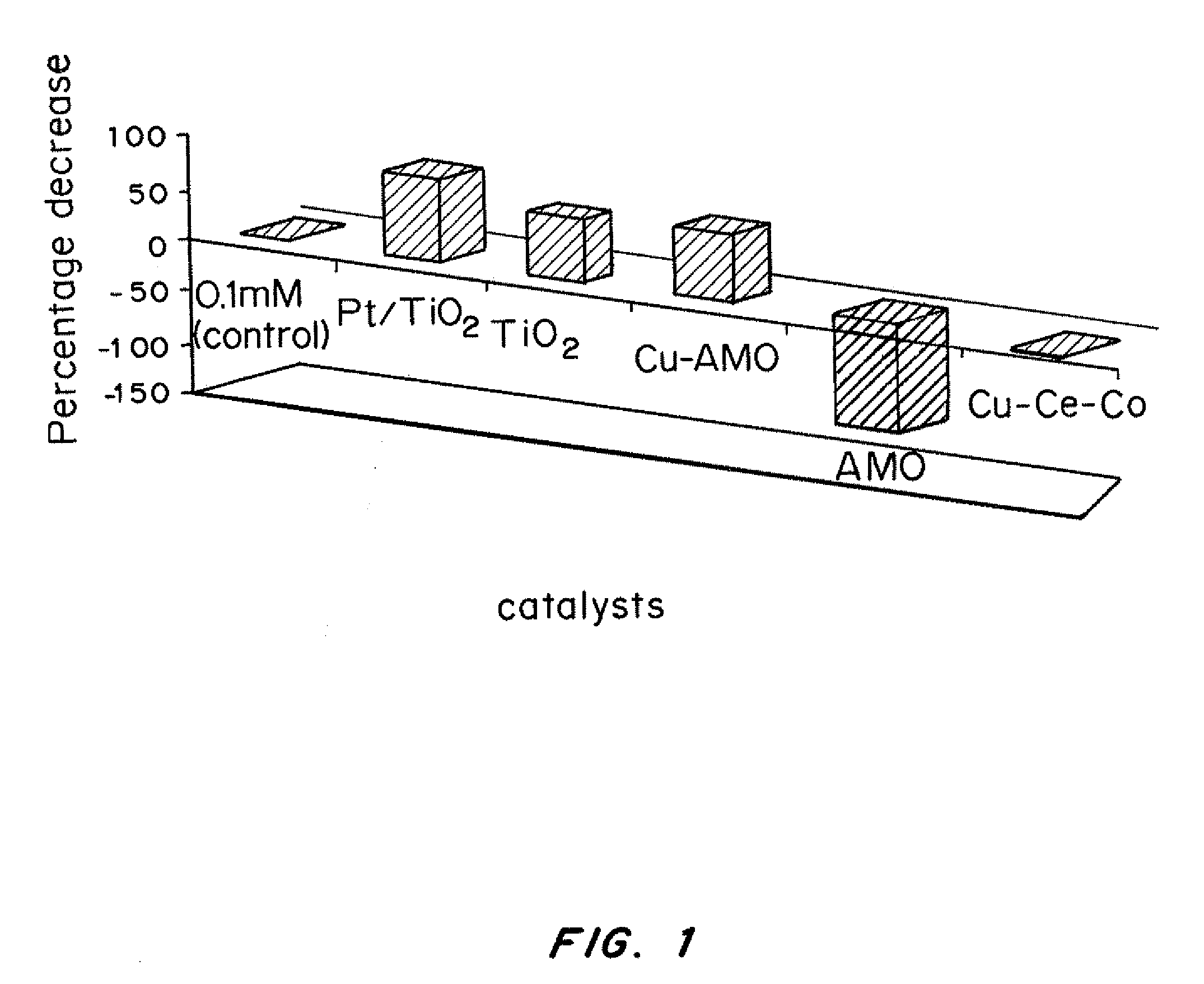Methods for the treatment of ballast water
- Summary
- Abstract
- Description
- Claims
- Application Information
AI Technical Summary
Benefits of technology
Problems solved by technology
Method used
Image
Examples
example 1
Photocatalytic Generation of N2 from NH3
[0165]A pulse of light of a particular frequency and intensity of a quick duration (nano or pico-second burst or similar duration providing a multi-photon discharge) is used to photodissociate ammonia to nitrogen and hydrogen with no production of any intermediates or oxidized by-products such as nitrate, nitrite or nitrous oxide. This is accomplished by the use of the correct promoter, light frequency energy and / or specific input of the correct bond dissociation energy or energies for ammonia with a proper intensity which provides for a multiphoton or frequency energy exposure of the ammonia molecule. A particular molecular bond having a precise energy of bond or dissociation in each target molecule is broken by photo-dissociation, only due to the light pulse being at the proper frequency and intensity with the proper number of photons attached within the necessary time to prevent reconnection, thereby producing harmless nitrogen and hydroge...
PUM
 Login to View More
Login to View More Abstract
Description
Claims
Application Information
 Login to View More
Login to View More - R&D
- Intellectual Property
- Life Sciences
- Materials
- Tech Scout
- Unparalleled Data Quality
- Higher Quality Content
- 60% Fewer Hallucinations
Browse by: Latest US Patents, China's latest patents, Technical Efficacy Thesaurus, Application Domain, Technology Topic, Popular Technical Reports.
© 2025 PatSnap. All rights reserved.Legal|Privacy policy|Modern Slavery Act Transparency Statement|Sitemap|About US| Contact US: help@patsnap.com

